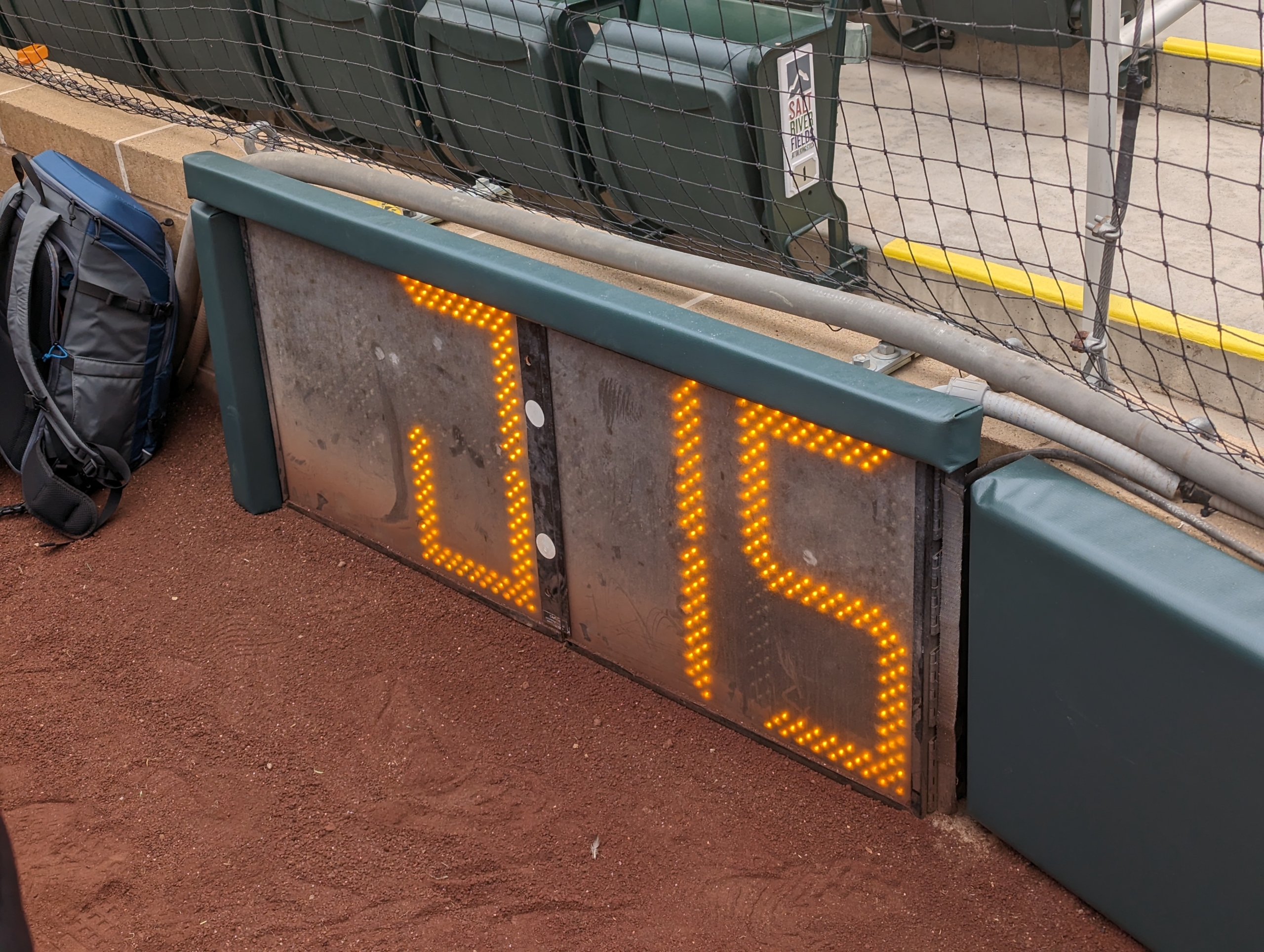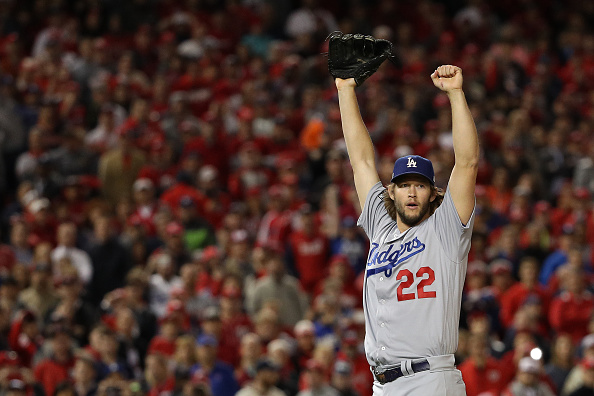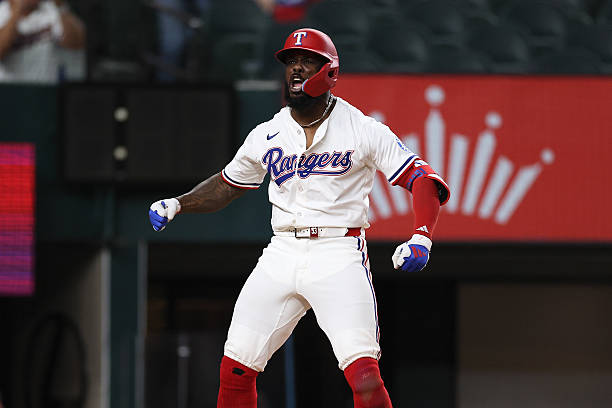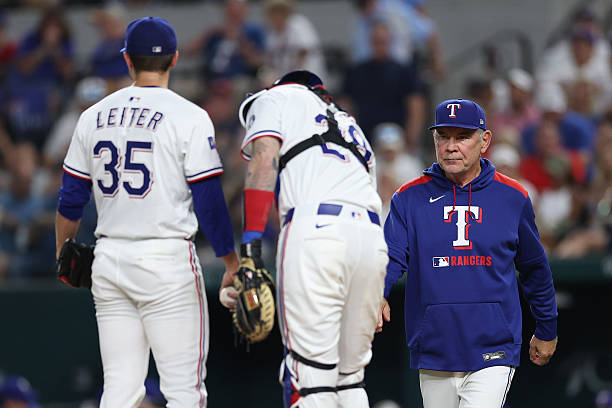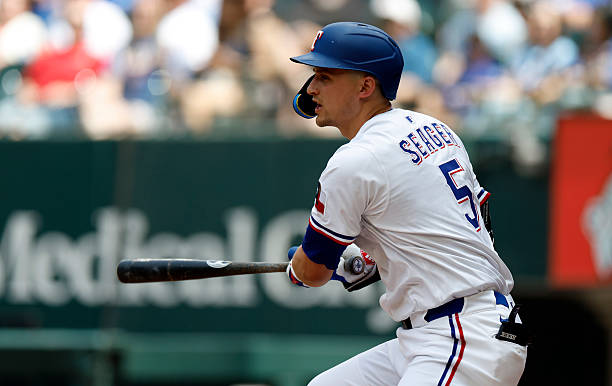2023 Rule Changes Demonstrated and Explained by MLB Representatives
SCOTTSDALE, Arizona, Feb 14 — Officials from Major League Baseball demonstrated Tuesday the three major rule changes going into effect when spring training games begin February 24 — larger bases, no shift, and the pitch clock.
In a media briefing prior to the on-field demonstration, Morgan Sword, the Executive Vice President of Operations, said the rule changes are “probably the biggest change that’s been made in baseball in most of our lifetimes.”
So what are the changes? Why did the league feel the need to implement them? Where did they get the ideas in the first place? How did the changes come about? Were the rules tested? Sword and Chief Operations/Strategy Officer Chris Marinak briefed the media on all this immediately prior to the on-field demonstration.
Current State of the Game and Desire to Improve
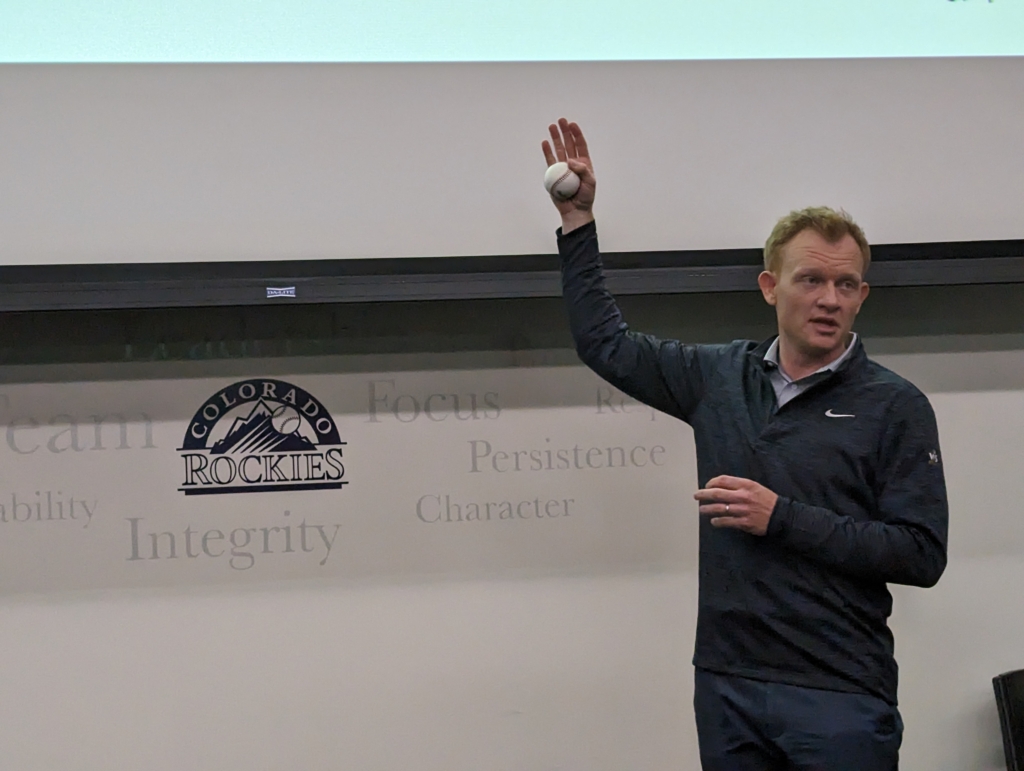
Marinak opened with a report on some positives for the league. The final weekend of 2022 was the highest attended final weekend of the regular season since 2015. Furthermore, September, 2022 saw the highest September attendance since 2014. Marinak said the most likely reason for these numbers was the addition of the third wild card team in each league. Wild Card Round viewership ratings were up 73%, and every round afterward (combined) saw a 10% increase in viewership. Streaming subscriptions were up 13%, and there were roughly a record 11 billion total minutes watched through streaming.
The league feels it is in a good place, but still wants to improve. They have polled self-described baseball fans on what the ideal game time is. The poll results came in at around 2:30. In 2021, the average major league game time was 3:11. In 2022, it was 3:07. When asked which plays fans want to see more of, the top four responses were stolen base attempts, triples, doubles, and great defensive plays. The top four responses for what fans want to see less of were walks, mound visits, pitching changes, and pickoff attempts.
Creating the Rule Changes
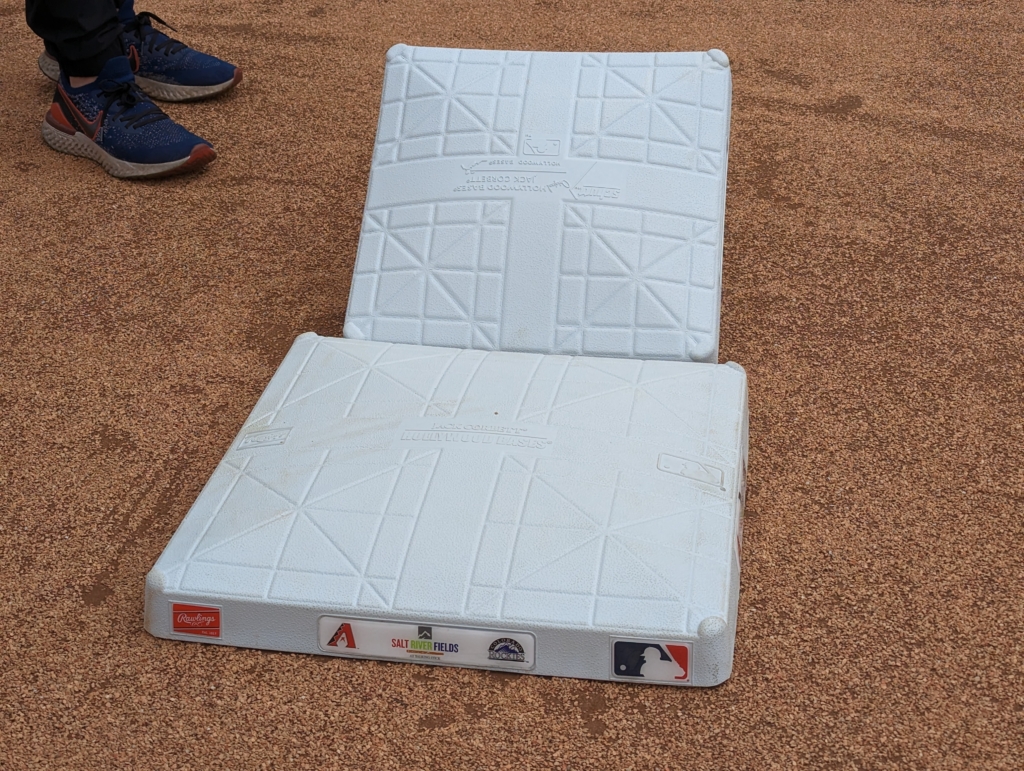
A brainstorming group took these results, and sat down “with a blank sheet of paper” to figure out the best way to incorporate the fan poll responses. After hundreds of hours, this group came up with a pitch timer, shift restrictions, and bigger bases. According to Sword, these ideas were tested in over 8,000 minor league games before being presented to the competition committee, who voted in late 2022 to implement these rules beginning in 2023.
Bigger bases were implemented mainly to reduce the probability of collisions, especially at first base. But there is an offshoot effect that could lead to more of the plays the poll respondents mentioned. While the distance between bases will still be 90 feet, that 90 feet is measured from the back point of home plate down the foul lines to the back edges of first and third base. With 15-inch bases, that means the distance between the back corner of home plate and the front edge of first base is 88 feet, 9 inches. With 18-inch bases, that distance becomes 88 feet, 6 inches.
The measuring point for second base, however, is the middle of the base. So bringing the edge of second 1.5 inches closer to first/third base and the edge of first/third three inches closer to second will have a net effect of the bases being 4.5 inches closer together — something that could make for closer plays on steal attempts.
No Shift
For months it’s been known that the league is banning the shift starting in 2023. This means that all four infielders must have both feet “within the outer boundary of the infield.” Two infielders must be positioned on either side of second base when the pitch is released. Teams are, however, permitted to bring in an outfielder to act as a fifth infielder.
There is a third provision, one that came because it became known that teams would try it. In the words of the slide show, “In a given inning, infielders may not switch sides — e.g. placing the best defender on the side the batter is more likely to hit the ball) or move to the outfield unless there is a substitution.”
To aid in enforcement of the outer boundary provision, all fields must have the infield boundary set at a 95-foot arc from the front center of the pitching rubber. The “either side of second base” provision means, specifically, that both feet must be “clear of the perimeter” of second base. Teams may not try to circumvent the spirit of this rule by having an infielder running toward the opposite side of second as the pitch is released — akin to a receiver going in motion at the snap in football — or by having an infielder sprinting back towards the outfield as the pitch is released.
Pitch Clock
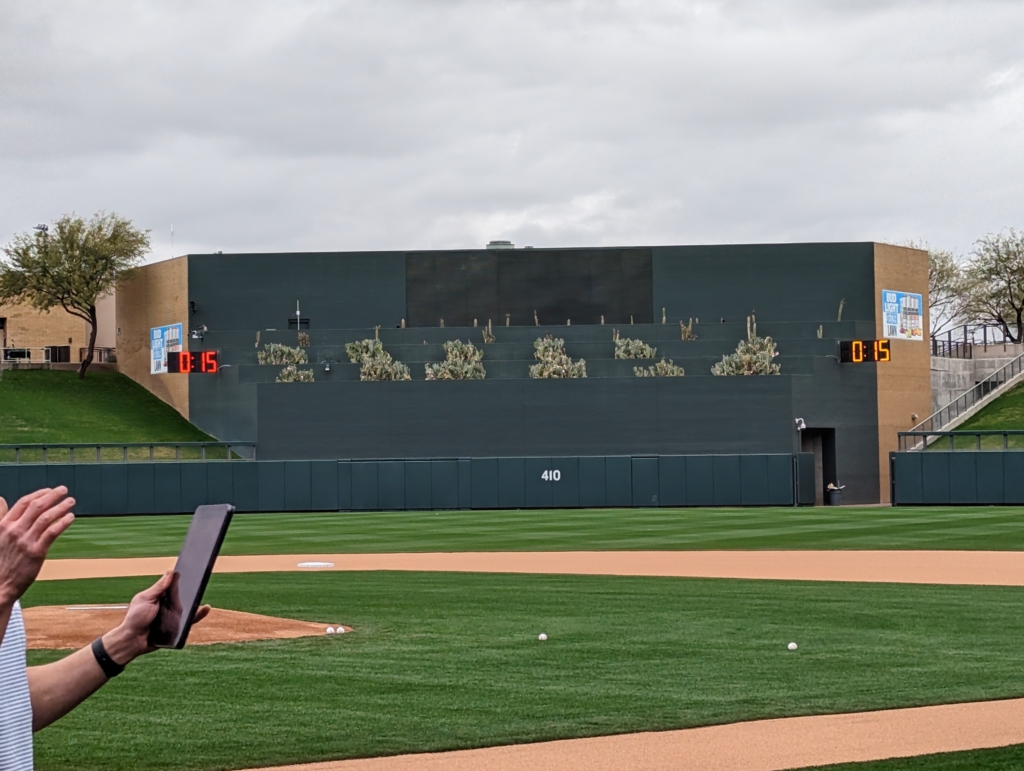
The biggest change of all will be the implementation of the pitch clock. Sword showed the media a table illustrating its’ effects across the minors. Total runs per game mostly held steady, increasing from 5.11 to 5.13. Batting average went up by two points, from .247 to .249. Home run percentage dipped slightly from 2.8% to 2.7%, and hit-by-pitch percentage stayed the same, being 1.6% both seasons. But the two biggest changes came in game time, and in the combined strikeout and walk percentage. Average game time for a nine-inning game dropped by 25 minutes, from 3:03 to 2:38. In 2021, strikeout percentage was 25.4% and walk percentage was 10.2%, a combined total of 35.6% of all plate appearances. That dropped to 34.9% of all plate appearances in 2022, with a 24.4% strikeout rate and 10.5% walk rate.
The pitch clocks will be positioned on either side of center field in addition to the already-existing timer sitting on the mezzanine level of center field in every ballpark. Two more will be on either side of home plate at the field level. Every clock will be out of view of the broadcast cameras. The broadcasts will receive a data feed from the clock, and will display the data feed on screen.
The Rules
There was already a time limit between half-innings and on pitching changes. For 2023, the limits will be 2:15 for most games, 2:40 for a national broadcast, and 3:10 for a postseason game. Between batters, the limit will be 30 seconds. For the actual pitch clock, the limit will be 15 seconds with the bases empty and 20 seconds with one or more runners on base.
- The pitcher must begin his motion before the timer hits zero. For the windup, that means the first step with the free foot. When in the set position, the motion begins when he lifts his free leg after coming set.
- The batter must be ready with eight seconds left on the clock, meaning he must have both feet in the box and be visually engaged with the pitcher. He cannot hold his hand up the way Derek Jeter did. In addition, he can only call time once in a plate appearance, barring special circumstances such as something being in his eye.
- The catcher must be in the catcher’s box with nine seconds left. Sword could not remember this being violated in any of the 8,000 minor league games that used a pitch clock.
To aid umpires with enforcement, the entire crew will have buzzer devices made by the same manufacturer of Pitch Com. Umpires can wear it on the wrist, upper arm, ankle — wherever it is most comfortable for him. When the clock hits zero, it will buzz. This is so, when a pitcher comes set or is about to deliver a pitch, the umpires can focus on where their eyes need to be instead of constantly glancing at clocks.
Balks and Illegal Pitches
The beginning of the pitcher’s motion brought up another rule that is already in existence — balks or, with no one on base, illegal pitches. When winding up, a pitcher is allowed — according to Rule 5.07(a)(1) — to take one step backward and one forward with his free foot. Some pitchers, namely Luis Garcia of the Houston Astros, take more steps than permitted when winding up. These pitchers must adjust their motion to avoid constantly being called with an automatic ball.
This also means that the “full body stop” must be enforced from the set position. Some pitchers — namely Toronto Blue Jays right-hander Kevin Gausman, whom Sword showed in a video — bounce on the front foot before delivering the pitch with runners on base. Sword acknowledged that this should have been called a balk all along. He continued to say that the rule must strictly be enforced so that the umpire and pitch timer can clearly see when the pitch motion begins.
With runners on, pitchers are allowed two “disengagements” without penalty. These include stepping off the rubber for any reason, even to clear his head, and throwing to a base. On the third disengagement, he must record an out; otherwise, it is a balk.
There are “carveouts” to the disengagement rule. One is a malfunction of the pitcher or catcher’s Pitch Com device. (If it’s the device of any other fielder, the team will have to live with it.) Another carveout is a request for a new ball, but the pitcher must make the request before the clock hits 0:08.
Any time one or more runners advance, the disengagement count resets. So, for example, if a runner steals a base, the count resets. If a runner advances due to a balk, the count also resets.
Restarting the Clock
When a new batter comes to the plate without an out being recorded, the 30-second count starts immediately. If the ball is put in play, the clock starts when the ball is back on the infield. So if there’s a groundout, the clock starts as soon as the out is recorded, even if the team chooses to throw the ball around the horn.
Practicality will be considered. If a batter hits a double, for example, the clock start will be delayed long enough for him to remove any protective equipment and hand it off to whomever runs it back to the dugout. On long foul balls that are either playable or close to it, the clock operator will give the players time to get back to their positions before starting the new clock. Runners will be given time to return to their bases. Fielders will get time to head back to their positions. The batter will need to get back to the box. Pitchers will need to get back on the mound dirt.
Going Forward
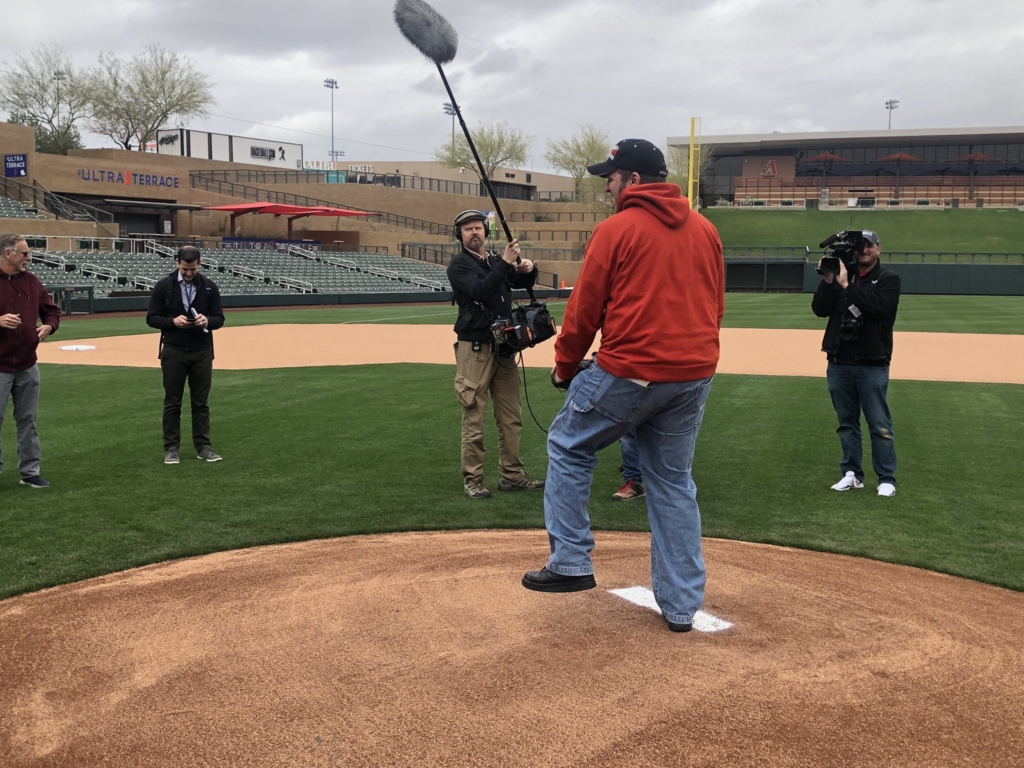
There will be an adjustment period, obviously. Most of the kinks will get worked out in spring training, but not all. The main goal is not “gotcha,” but to cut down on the extraneous delays. It is also to get more balls in play, and to get baseball back to the pace it saw in the 1980s and even the early 90s.
This reporter was the “volunteer” who took the mound during the pitch clock demonstration. When pitching from the windup, this reporter went through the steps of taking the sign and starting the windup. When reaching the top of the leg kick in the windup, the clock had six seconds remaining of the fifteen. After that, this reporter went through the set position as if runners were on. This reporter “took the sign,” went into the stretch, came set, and “checked the runner on first.” He then went into a quick windup. At the peak of the kick, the clock had eight seconds remaining. It didn’t feel unusual or rushed at all.
Some pitchers will have to adjust, but most of the time it will not be a very big deal. The batters might have to make bigger adjustments than the pitcher. There could be more batter violations than pitcher violations. Pitchers, with runners on, probably will not let the clock run near zero very often, because runners will be able to time their jumps better if they know the pitcher must go home soon. At any rate, it will be different, but it will still be big league baseball.
More General Baseball Articles
More Major League Baseball Articles
More MLB Articles
Main Photo Credits
SCOTTSDALE, Ariz. (Feb 14) — A pitch clock behind home plate at Salt River Fields, spring training home of the Arizona Diamondbacks and Colorado Rockies. (Photo by Evan Thompson)
- Categories
-
General Baseball
Major League Baseball

